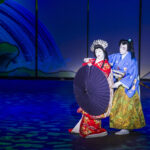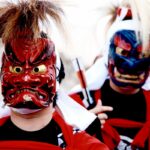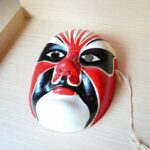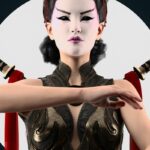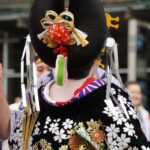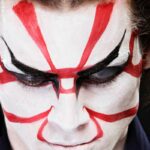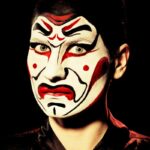Both noh and kabuki are Japanese art forms that were formed centuries ago. Both forms of Japanese theater may seem quite similar as both are highly traditional yet there are some key differences.
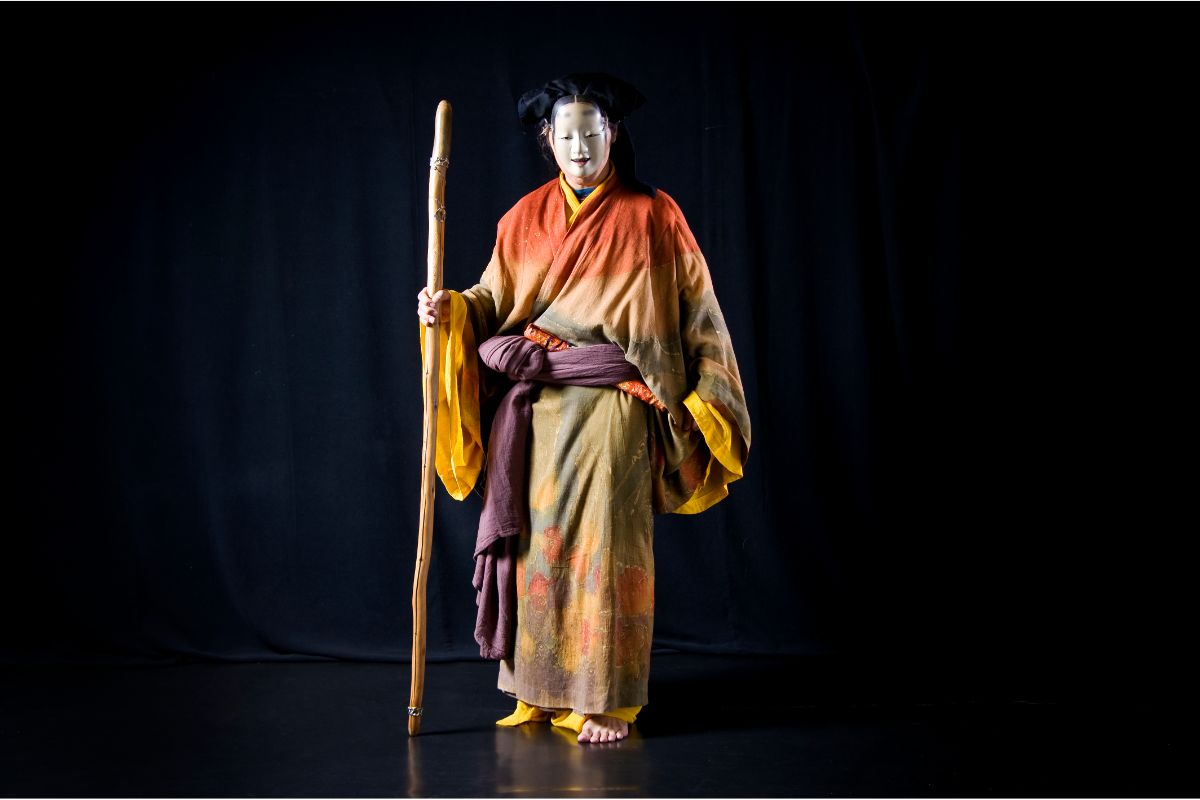
These include visual differences in what the actors wear and how they appear as well as the stories that they are telling. There are also distinctions to be made between their histories, audiences, and tones.
In this guide, we will compare kabuki with noh theater and examine the key differences between the Japanese arts.
Visual Differences
One of the very first differences between noh and kabuki theater is an exceedingly telling one. In kabuki, the performers wear face paint while in noh, the performers wear masks which may seem difficult to comprehend and visualize.
For example, if an actor was required to display sadness, they would wear a mask that has a sad expression. You can also expect kabuki to be more visually exaggerated than noh in the form of longer, more voluminous wigs and facial expressions.
In the form of onnagata, you will find male actors playing female roles in kabuki theater. That’s a contrast to the early days of kabuki theater when both male and female actors performed.
As only men perform in kabuki, there is the visual difference of seeing a man take on a feminine appearance.
Female actors do exist in noh theater and can even form their own category of noh plays. This is the aesthetic known as yugen where women appear to be delicate and especially plaintive or resigned while thinking about love.
There are also ‘Madwoman’ plays where women appear to be suffering in grief or just angry. Their madness can come from acute sensibility or even possession by a spirit.
The History
There is a 200-year difference between noh and kabuki so you could say that noh set the path for kabuki to follow. Noh is the older of the two art forms as it started in the 14th century.
The first reported kabuki performance dates back to 1603 which still makes it a traditional art form, just not as traditional as noh theater. Part of that history helped noh theater become declared as a heritage of humanity in 2001 by UNESCO.
The Tone
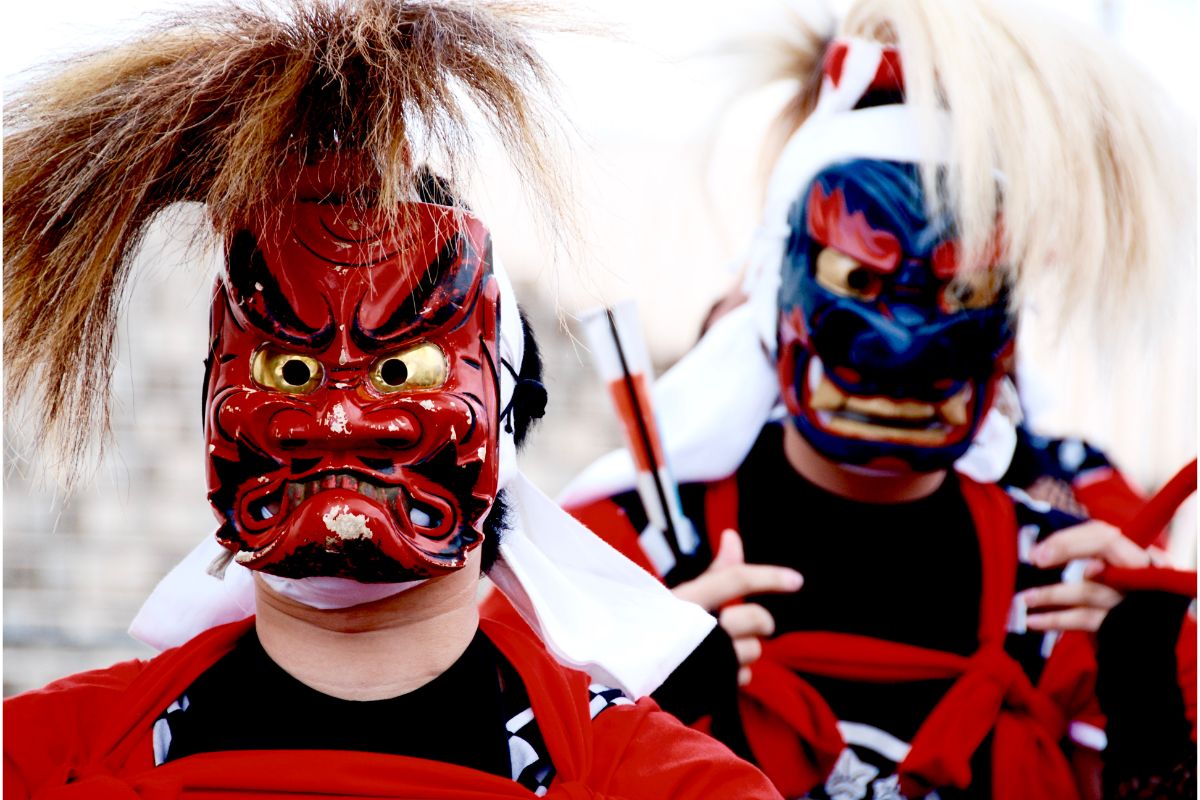
With the addition of face paint and large wigs, performers in kabuki theater can also be expected to shout during each performance for exaggeration.
In comparison, noh theater takes on a more somber tone which should mean few shouts are heard. That still means elements of music, poetry, dance, and drama can be expected in each noh performance, just in a more subtle tone.
That may mean little scenery and few props yet there should be musical instruments playing a prominent role.
Kabuki theater performances tend to use old-fashioned language which can prove difficult to follow.
At times, audiences can lose track of simply what is being said between actors so the plot can be lost on occasions. That can also prove problematic when kabuki performances tend to be incredibly long.
One single performance may not stretch for just a few hours, but perhaps five or six. What helps is how vibrant the performance can be with several dancers and an orchestra.
If you do have the time to take in a performance make sure that you sit down comfortably and pay attention.
While kabuki theater can be seen as a dramatic form of dance-based theater including vocal performances, noh resembles more musical theater.
In some cases, there are few differences between the actual stories being told in noh and kabuki theater. The key difference will be how the story is told, whether with dance and movement or accompanied by music via songs.
Their Audiences
Noh theater was designed for the upper, and higher classes which fed into the performances and how the stories were being told.
The actors did their best to earn the Samurai’s respect so you can expect a somewhat restrained performance with little shouting.
Not just the Samurai were the aimed audience for noh theater either as the actors would go out to impress those nobles and upper, higher classes too.
The costumes in noh theater prove to be highly expressive and very expensive to focus the audience’s attention on their performances.
As noh theater already existed when kabuki made its appearance in 1603, the latter art form opted for a different audience to gain a foothold in society.
That meant lower classes, including the merchant class, and farmers so the actors could express themselves a touch more vibrantly.
Shouting aloud was encouraged and the performances were more engaged with their audience. You can expect a revolving stage, props, and contraptions to allow the actors to frequent the stage easily and effectively mesmerize their audience.
The Stories
You can expect the stories in noh theater to have a certain depth to them. Human values are featured heavily as well as spiritual and religious values too.
Noh goes even further by including the dramatics of superheroes and even ghosts which can seem highly dramatic.
In kabuki theater, the stories revolve around love stories with many characters demonstrating their moral conflicts of the heart. That can mean more expressive make-up and more vocal performances.
On the occasion when the story is not about love, you can expect a kabuki theater performance to depict a Japanese historical event.
In some cases, you can expect noh to be performed as a somber solo piece. Kabuki theater can be memorable for different reasons.
That can range from the dramatics of the story itself, to the make-up worn, and the lavish costumes used to carry the plot along.
Frequently Asked Questions
What Do Noh And kabuki Theater Have In Common?
There is a sense that kabuki imitates noh theater which may have something to do with the 200-year difference between the two art forms.
Despite that crucial difference, there are several similarities between noh and kabuki theater as both form an important aspect of Japanese culture.
Each performance, whether it be in kabuki or noh theater is designed to entertain an audience through storytelling. The plays should also take on a theme of medieval society as the characters will be dressed in the costumes of that period.
What Are The Known Unique Features Of Kabuki Theater?
As a traditional Japanese art form, kabuki theater is highly rich in showmanship. That can be seen in the elaborate and intricate design of the costumes that the actors wear.
There are also the outlandish wigs that are worn which, combined with the awe-inspiring make-up, aids the exaggerated actions of the actors.
Final Thoughts
To many who are new to Japanese theater, the traditional forms of noh and kabuki theater can seem quite similar.
Once you dig down into each art form, you can spot the differences. Kabuki performances seem to rely on the costumes and special effects for their drama.
Noh theater has more of a reliance on props and the masks worn by actors to create a different, more somber tone.
- 16 Best Websites To Watch Japanese Movies With English Subtitles - May 11, 2023
- Is ZIPAIR The Best Airline For Traveling To Japan? - May 11, 2023
- Ryu Murakami Vs Haruki Murakami – Which One Should You Read? - May 11, 2023

